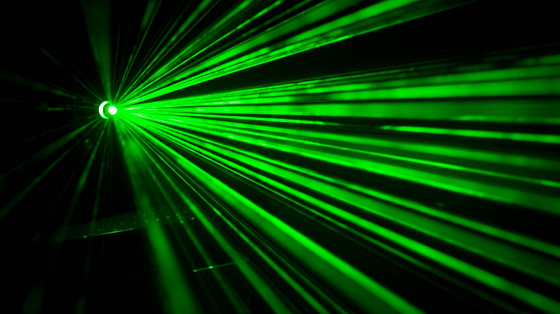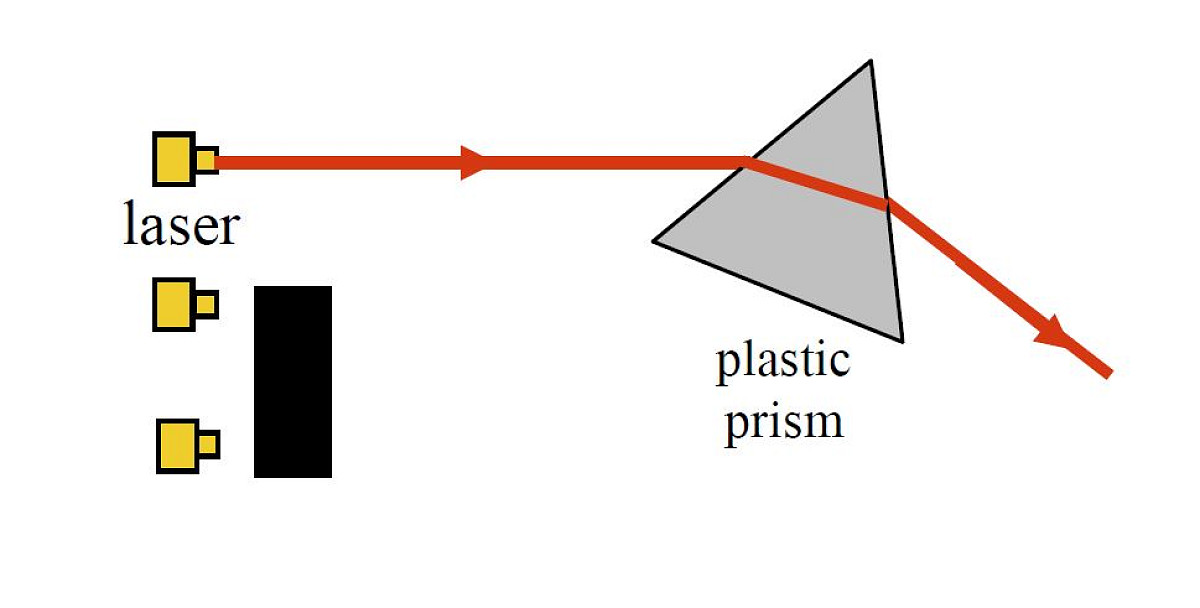Born out of a desire to create a versatile, simple to use comprehensive kit to aid the learning of optics, photonics and electronics, Minilabs is dedicated to providing quality teaching materials for High Schools, Colleges and Universities.
Our photonics Minilab II is the ideal vehicle for teachers to use as a one stop solution to providing years 8-12 and beyond with a comprehensive knowledge of optics, photonics and electronics. Minilab II has been designed for students to take a hands on approach. It is safe, fun, affordable and most importantly of all an invaluable teaching aid that will convey all of the important aspects of photonics. It is fast and simple to set up even the toughest of experiments. Within a few minutes of opening the box you can be running a spectroscopy experiment, a Michelson Interferometer or even a free space optical link to send a radio signal embedded in a beam of light.

This stand alone laser and accessories have been assembled from global sources to provide a red and green laser housed in a single unit with laser output 1mW or less to comply with Class 2 devices making it safe for use in classrooms.
This unit is available to purchase from Scientrific
The Minilab II manuals include full experiment instructions and safety information.
Minilab II includes an extensive set of experiments that continue to evolve. The introduction from the lab manual and some selected experiments are available below.
Photonics, the study of light, has become the most important area of physics in recent years, with many Australian Universities at the forefront of this research. The Australian National University in Canberra developed the first successful device to teleport a laser beam. This has massive implications for the future of cryptography and quantum computers.
There are many exciting areas of research; from producing a Bose-Einstein-Condensate (an entirely new form of matter) to searching for gravity waves using a very large laser detector based on the interference of light.
If the 20th century was the era of electronics, the 21st is the era of photonics.
In order for Australian students to make the most of the exciting opportunities forthcoming in the age of photonics, they need to be equipped with the knowledge and skills that are in demand now and into the future.
Here at Minilabs we have developed the first and only complete photonics laboratory in a box. The Photonics Minilab comes with comprehensive notes guiding you through some famous historical experiments as well as those at the cutting edge of physics.
For teaching photonics at your school, the Photonics Minilab is everything you need.
The photonics industry has grown rapidly in recent years, and the curriculum is changing to reflect its importance. Many devices we use everyday rely on the physical properties of light. Barcode scanners in supermarkets have lasers reflected by rotating mirrors, nearly all of our communication, voice or data, is transmitted by lasers coupled into fiber optic cables. Photonic devices are rapidly replacing electronic for reasons of safety, power consumption, speed, reliability and sometimes because of their bizarre quantum properties. Many of the most innovative research areas are centred around photonics.
Photonics is a cutting edge field in physics, and its importance will grow ever stronger. As scientific knowledge increases, industry will follow, creating more demand for expertise in this exciting technology.
Minilab II is only available for purchase through Scientrific.

We saw in the reflection experiment that light travels in straight lines until it meets the boundary of two media.
Refraction occurs when light meets the boundary of two media, and the light continues through the second. For example, when light hits the boundary between air and water, its path bends, but it still continues through the water. If you stick a pen in a glass of water, it appears to bend when it touches the water. This is because light travels at a different speed through water than it does through air.
In fact, light travels at a different speed in every medium. It travels fastest in a vacuum – the speed at which it travels is referred to as the speed of light, and is denoted c. The speed of light is known very accurately, but for most purposes:
c = 3x108m/s
is good enough. The speed of light in any other medium is defined as the speed of light (in a vacuum, c) divided by the refractive index (n) of the medium. Mathematically,
v = c/n
The refractive index of any material is greater than or equal to one (nvacuum = 1 but otherwise n > 1). The refractive index of air is very close to one, nair ≈ 1.008

Figure 1.2.1 shows the refraction of light as it passes from one medium to a denser medium. An analogy is to consider running from grass to sand. The direct route is not always the quickest as the best way is to stay on the grass longer.
The direction of propagation of light in the second medium depends on the angle of incidence (θi), the refractive index of the first medium (n1), and the refractive index of the second medium (n2). The Law of Refraction is known as Snell’s Law, and is given by:
n1sin(θi) = n2sin(θr)
In this experiment you will use Snell’s Law to determine the refractive index of the plastic block.
Place a sheet of paper on the base of the laser bench. Turn on the laser and position the plastic block at an angle to the laser beam, Figure 1.2.2 Block two of the beams with the slide holder.
Draw around the block and use a screen or card to trace the path of the laser beam. Mark where the beam enters and leaves the plastic block.
Measure the angle of incidence (θi and the angle of refraction (θr. Take several measurements at different angles for the block.

Draw up a table and fill in the results for θi and θr.
| θr | θr | Refractive index n2 | Speed of light in the block |
Are the angles of incidence the same as the angles of refraction?
If the angles are different it means the refractive index of the block is different to air.
The refractive index of air is 1.00. Use Snell's law to calculate the refractive index n2 of the block and fill in the table.
The velocity of light in a vacuum c is 300,000 km/s.
In the block the speed of light v is given by v=c/n2
How fast is the light in the plastic block? Put the results into the table.
Repeat the procedure using the 60° prism, Figure 1.2.3 tracing out a few ray paths and then calculating the refractive index of the prism using Snell's Law.
